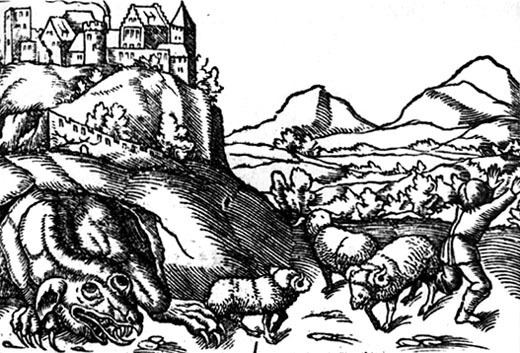 | ||
Hours Open today · Open 24 hoursSundayOpen 24 hoursMondayOpen 24 hoursTuesdayOpen 24 hoursWednesdayOpen 24 hoursThursdayOpen 24 hoursFridayOpen 24 hoursSaturdayOpen 24 hoursSuggest an edit Similar Wawel Royal Castle, Dragon's Cave, Skałki Twardow, Mural "Smok Wawelski", Jordan Park | ||
The wawel dragon polish legend
The Wawel Dragon (Polish: Smok Wawelski), also known as the Dragon of Wawel Hill, is a famous dragon in Polish folklore. His lair was in a cave at the foot of Wawel Hill on the bank of the Vistula River. Wawel Hill is in Kraków, which was then the capital of Poland. In some stories the dragon lived before the founding of the city, when the area was inhabited by farmers.
Contents
- The wawel dragon polish legend
- The legend of the wawel dragon
- History
- Late Middle Ages
- Attempts to explain the legend
- Modern times
- Dragon in culture
- References
Wawel Cathedral and Kraków's Wawel Castle stand on Wawel Hill. In front of the entrance to the cathedral there are bones of pleistocene creatures hanging on a chain, which were found and carried to the cathedral in medieval times as the remains of a dragon. It is believed that the world will come to its end when the bones will fall on the ground. The cathedral features a statue of the Wawel dragon and a plaque commemorating his defeat by Krakus, a Polish prince who, according to the plaque, founded the city and built his palace over the slain dragon's lair. The dragon's cave below the castle is now a popular tourist stop.
The legend of the wawel dragon
History
The oldest known telling of the story comes from the 13th century work of Bishop of Kraków and historian of Poland, Wincenty Kadłubek. According to his chronicle, the frightening monster appeared during the reign of King Krakus (lat. Gracchus). The dragon required weekly offerings of cattle, if not, the humans would have been devoured instead. In the hope of killing the dragon, Krakus called on his two sons, Lech and Krakus II. They could not, however, defeat the creature by hand, so they came up with a trick. They fed him a calf skin stuffed with smoldering sulfur causing his fiery death. Then the brothers argued about who deserves the honor for slaying the dragon. The older brother killed the younger brother Grakch (Krakus), and told that the dragon killed him. When he became king, his secret was revealed, and he got expelled from the country. The city was named in recognition of the brave and innocent Krakus.
Jan Długosz in his 15th century chronicle moved fratricide of the Krak sons for the period after king Krak I death. Brothers also named Krak and Lech. According to the initial version, Krak II was a younger brother and killed the older, but according to Jan Dlugosz it was the opposite.
Late Middle Ages
The second version, by Marcin Bielski from the 15th century, tells the story about shoemaker Skuba defeating the dragon. This, most popular, fairytale version of the Wawel Dragon tale, takes place in Kraków during the reign of King Krakus, the city's legendary founder. Each day the evil dragon would beat a path of destruction across the countryside, killing the civilians, pillaging their homes and devouring their livestock. In many versions of the story, the dragon especially enjoyed eating young maidens, and could only be appeased if the townsfolk left a young girl in front of its cave once a month. The King certainly wanted to put a stop to the dragon, but his bravest knights fell to its fiery breath. In the versions involving the sacrifice of young girls, every girl in the city was eventually sacrificed except one, the King's daughter Wanda. In desperation, the King promised his beautiful daughter's hand in marriage to anyone who could defeat the dragon. Great warriors from near and far fought for the prize and failed. One day a poor cobbler's apprentice named Skuba accepted the challenge. He stuffed a lamb with sulphur and set it outside the dragon's cave. The dragon ate it and soon became incredibly thirsty. He turned to the Vistula River for relief and drank and drank. But no amount of water could quench his aching stomach, and after swelling up from drinking half the Vistula river, he exploded. Skuba married the King's daughter as promised, and they lived happily ever after. The inspiration for the name of Skuba was probably a church of St. Jacob (pol. Kuba), which was situated near the Wawel Castle. In one of the hagiographic stories about St. Jacob he defeats fire-breathing dragon.
Attempts to explain the legend
Legend of the Wawel dragon have similarities with the biblical story about Daniel and the Babylonian dragon. Same stories are known about Alexander the Great but it is believed that the story has its own pre-Christian origins. In addition to attempts of explaining the legend of the Wawel Dragon simply as a symbol of evil, there might be some echoes of historical events. According to some historians, the dragon is a symbol of the presence of the Avars on Wawel Hill in the second half of the sixth century, and the victims devoured by the beast symbolise the tribute pulled by them. There are also attempts to interpret the story as a reminiscence of human sacrifices and part of an older, unknown myth.
